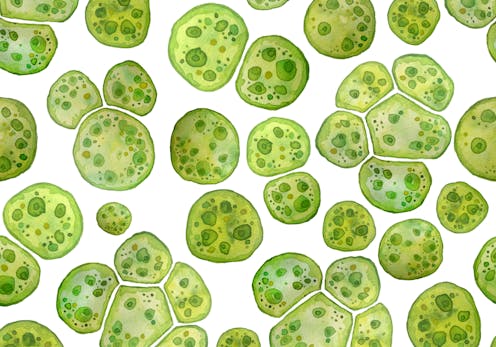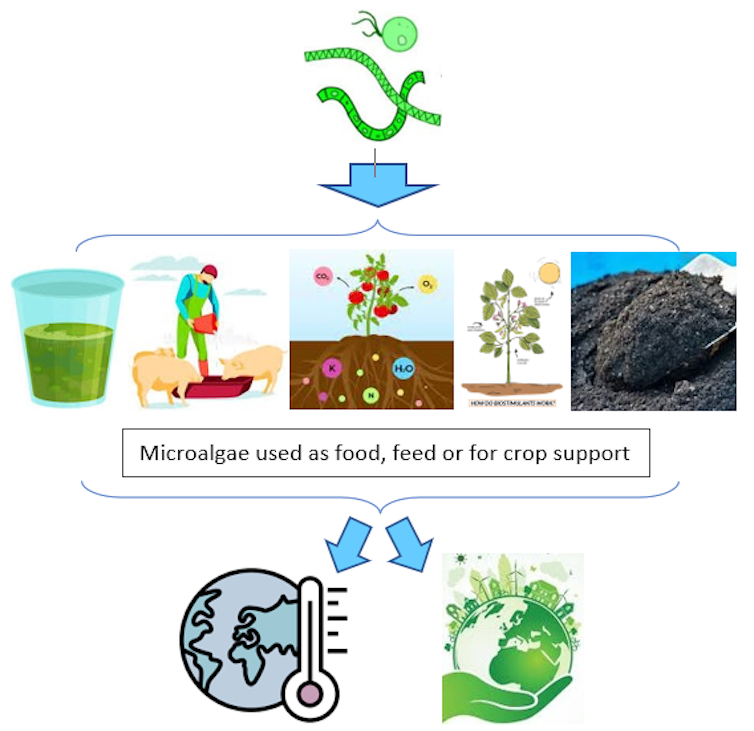
In 2021 the Intergovernmental Panel on Climate Change issued the first volume of its latest authoritative report on climate change. The United Nations secretary-general branded its findings a “code red for humanity”.
The emerging and predicted impacts on agriculture and food supplies are stark, according to the panel. For instance, heat waves, drought and increasing rainfall variability could adversely affect crop yields and livestock productivity. This, in turn, could cause problems with food availability and nutritional quality, as well as risks of malnutrition and hunger.
Some parts of the world disproportionately bear this burden: over three billion people are currently deemed highly vulnerable to climate change, most of them in Africa, South Asia and Latin America. Small-scale farmers and pastoralists are particularly at risk.
The need for climate action is now evident, but finding viable pathways can be challenging. Yet effective climate actions can reduce climate-related risks while fostering sustainability. “Climate smart” agricultural technologies offer various proven climate actions, such as agroforestry or drought-tolerant seeds. Such technologies can potentially raise farm productivity while also mitigating (that is, combating) climate change or helping farmers adapt to it, or both.
Growing interest in microalgae
Microalgae are a diverse group of microscopic aquatic organisms. Like plants, they typically generate energy from sunlight through photosynthesis. But they differ from plants in basic ways. For instance, they grow in water instead of on land and absorb nutrients directly instead of via roots. While some microalgae are seen as harmful, others provide useful products.
Consumers, businesses and researchers have shown growing interest in microalgae in recent years. Use of Arthrospira platensis (spirulina) as a food supplement is one example. Others include how microalgae can be used as crop support tools, bioplastics or biofuels.
One question that has remained largely unexamined, however, is whether “agri-food” applications of microalgae might offer promising options to mitigate or adapt to climate change.
A new academic paper set out to provide provisional answers. It reviewed the available evidence on microalgae as food supplements, livestock feeds, biofertilisers, biostimulants and biochar feedstocks. It then assessed the potential of these five microalgae applications to serve as the basis for climate actions.
Agri-food applications and climate action
Microalgae have been used as traditional foods in various countries where suitable species occur naturally, such as Mexico and Chad.
Nowadays microalgae food supplements are principally eaten by health-conscious consumers. Yet they can also be used to address malnutrition and to improve health in places where diet is poor. As foods, microalgae can be potent sources of nutrients, including high-quality proteins, lipids and vitamins.
Microalgae production has characteristics that clearly distinguish it from plant or animal production. It doesn’t require fertile land. It is largely independent of local weather patterns and could potentially recycle water. It has elevated productivity and scope for continuous harvests. This technological profile is well suited to coping with climatic shocks, so microalgae production can be climate resilient. The delivery of microalgal biomass for use as a food or for other applications can thus also be climate resilient.
Novel feeds like microalgae, seaweed and insects offer options to improve the sustainability of livestock production by providing protein-rich complements to staple feeds like grasses and feed crops. Microalgae feeds have been tested on cattle, goats, sheep, pigs, poultry and fish. The results have typically included improved productivity, better nutritional quality of products, or both. Microalgae could also provide a secure source of feeds in places where livestock deaths linked to climate change are a growing concern.
Global crop production continues to rely heavily on chemical fertilisers to boost crop productivity. However, such products can sometimes undermine agricultural sustainability or not cope well with climate change impacts.
Biofertilisers and biostimulants are natural alternative options for boosting crop production. Biofertilisers provide nutrients to plants. Biostimulants promote plant growth by stimulating biological or chemical processes in plants or microbes associated with roots.
Early studies of microalgae-based biofertilisers and biostimulants suggest they can boost productivity while also building the resilience of crops to climate-related stresses like elevated temperatures, water scarcity and soil salinity. Treated maize plants, for example, showed more developed roots than untreated plants. This resulted in better resistance to drought.
Microalgae could also support crop production by using algal biomass to make biochar, or charred biomass. Applying biochar to fields can improve soil fertility and enhance soil’s capacity to hold water. Such effects could help crops cope with climate change impacts like erratic rainfall and extreme weather events.
Biochar was a traditional soil management tool in some cultures, and treated fields sometimes remain distinct. For instance, fields treated many centuries ago in South America were found to contain up to 9% carbon compared with 0.5% on neighbouring fields. Moreover, their productivity was twice as high as that of untreated fields. Early studies on biochar made from microalgae have suggested it could be an effective soil amendment.
Mitigating and adapting to climate change
Taken together, these five agri-food applications of microalgae could be seen as possible ways to enhance the climate resilience of food production, and hence as climate change adaptation measures. Concretely, they offer options to help secure both food supplies and agricultural livelihoods despite climate change.
These five applications were also found to offer possible ways to mitigate climate change, whether by reducing greenhouse gas emissions or transforming these gases into physical form. One example is partially replacing an imported livestock feed like soymeal – associated with transport emissions and tropical deforestation – with microalgae-based feeds that need comparatively little land and could be locally sourced. Another example is using microalgae-based biochar to build up soil organic carbon in stable form.
In future, such mitigation measures could perhaps be supported by the carbon markets. These markets offer mechanisms to pay for projects that mitigate climate change. In theory this could provide cash flows to participating stakeholders, including farmers. Such projects might moreover be attractive to potential participants given sharp rises in carbon credit prices in recent years, even if these initiatives have sometimes proven disappointing in the past. Several institutional developments would, however, be needed to make this possible.

The five microalgae applications examined clearly hold promise, both as avenues for fostering climate resilient food production and as climate change mitigation measures. These applications could thus be framed as climate actions. But more research is needed to explore and verify this potential, and to examine issues like consumer acceptance and managing possible contamination risks.
In the meantime, these five microalgae technologies merit greater attention from consumers, farmers and governments as timely and hopeful innovations.
Jules Siedenburg does not work for, consult, own shares in or receive funding from any company or organization that would benefit from this article, and has disclosed no relevant affiliations beyond their academic appointment.
This article was originally published on The Conversation. Read the original article.







